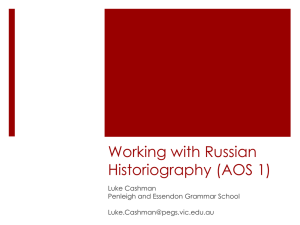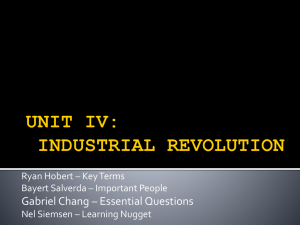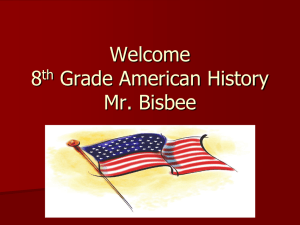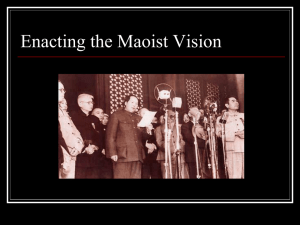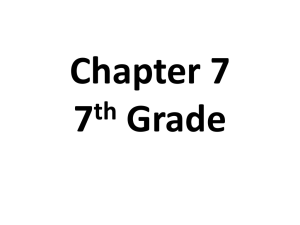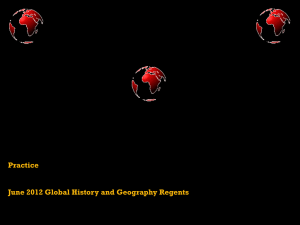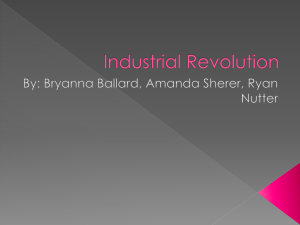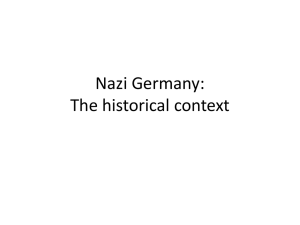History of the Russian Revolution
advertisement
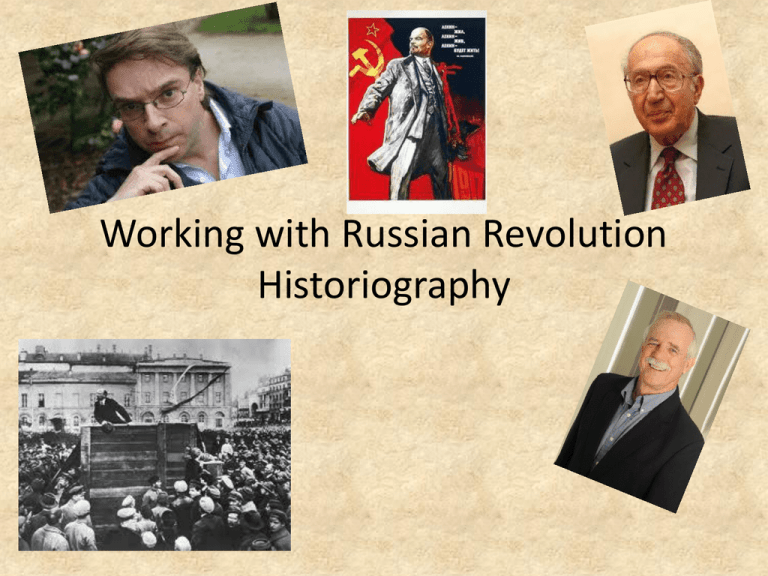
Working with Russian Revolution Historiography • d. Working with Russian Historiography Nick Frigo, Santa Maria College/Education Consultant The Russian Revolution presents students with a range of historiography. The collapse of the Soviet Union and translation of new primary and secondary sources over the past decade has meant that students are able to access a rich collection of very recent history writing from a range of different schools. During this session Nick will set out for students some of the significant forms of historiography about the Russian Revolution and ways of dealing with it in assessment. What is historiography? • This word has been used at many time to describe the writing of history (the work done by historians). • It can also be defined as describing another level of thinking – the study of how history has been written, spoken or thought about over time.” • For our purposes let’s stick with the first explanation + historians like to interpret, reinterpret and debate things . . . What is historiography? • Historians often debate about aspect of particular events. 1. How aware was the population of the Bolsheviks coming to power? 2. How much did the revolution change the provinces? 3. To what extent was Tsar Nicholas solely responsible for the revolution? 4. How significant were the events of Bloody Sunday? 5. Is it all about Lenin? Tsarist Russia Lenin Leadership How does Historiography fit into the VCAA exam expectations? Use of Historiography in Revs • Students should not learn responses such as ‘this is a secondary source’ or ‘this is a primary source’. Many students were reliant on Pipes and Schama, Zinn and Halliday; however, they needed to show knowledge of a wider range of views. • Students’ knowledge of historians was better with China and students were able to draw upon contrasting views in a meaningful way. A number of responses listed a large number of historians’ views as if they were trying to list as many names as possible; this was not a valuable way to respond and the discussion of views must relate to the events of the period. • (SOURCE: VCAA examiner’s report 2010) 2010 ‘Historiography’ Question • d. Evaluate to what extent this extract is useful in explaining the methods the Bolsheviks used to consolidate power. In your response quote parts of the extract and refer to different views of the Revolution. How does Historiography fit into the VCAA exam expectations? Many students did not understand the term ‘institution’; a large number of students wrote ‘Kaledin’ as an institution. Too many answers to Question 3c. quoted from Lenin’s speech but did not show understanding of the reasons why Lenin dismissed the Constituent Assembly. The most successful answers were able to grasp the desperate justification revealed by Lenin in the speech. Many saw it as a bid for power . . . The importance of learning chronologies was evident. In Question 3d., most answers did not challenge Lenin’s claim that the Assembly ‘did not represent the power of the people’. Instead they merely agreed with Lenin that the Assembly was ‘malignant’, ‘treacherous’ and ‘whining’. Students should challenge the claims made in speeches when undertaking historiography and explain the agenda underpinning such documents. Strong answers showed that the Bolsheviks actively sought civil war and that the speech was propaganda by Lenin. • (SOURCE: VCAA examiner’s report 2010) • It was concerning that some students referred to historians instead of factual knowledge in Question 3c. Students should be advised that the question called for a demonstration of their own detailed factual knowledge, not quotations from historians. They should look carefully at the dates given in the question, which are there to trigger recall of specific events. • In Question 3d., the skill of placing the representation within historical debate was challenging and helped to discern the excellent students. • The best approach was one where a historian’s viewpoint was explained and the student was able to show how it differed from or confirmed the ideas expressed in the representation. Many students confused historians between revolutions. Some students cited a historian of the French Revolution in a question on Russia and vice versa. • (SOURCE: VCAA examiner’s report 2010) • Significance of the Russian Revolution • “The Russian Revolution of 1917 is, beyond question, one of the most important events of the modern era.” (Wade) • The collapse of the Soviet Union in 1991 altered the prism through which we view the Russian Revolution but did not change the basic reality of its events or the fact the revolution profoundly shaped the history of the twentieth century. Tradition and Revisionist • “ . . . the revolution’s importance was recognized immediately and although there scattered scholarly publications in the first half of the half-century after the revolution, significant historical research in the form of a major body of scholarly writing emerged long afterwards, beginning only at the end of the 1960s.” • “Since the 1960s . . . .scholarship on the revolution has expanded rapidly, producing a rich body of historical literature. Moreover the collapse of the Society Union has made it easier to put the revolution into a better historical perspective . . . “ Early and ‘Traditional’ Interpretations • “Traditionally the Russian revolution was described in mainly political terms, and primarily as the history of political parties and the individual leaders, Vladimir Lenin and the Bolshevik Party most of all.” (Wade) • Competing interpretations existed early on in the post political struggle of the revolution . . . Indeed competing versions of the events of 1917 were a part of post-revolutionary political struggle both within the Bolshevik Party and the between the Bolsheviks and their opponents, both Russians and foreign. • Even the accounts foreigners usually reflected an identification with one political faction or another. 1920s Historiography • Both Western and Soviet Histories, different as they were in their assessment of events, were overwhelmingly political and concerned with political ideologies and the Bolshevik Party in particular. • The basic interpretation of the revolution took the form in the early 1920s. Especially important in this was Lenin’s 1920s essay “Left-Wing Communism” – developed in the same year was an official Party institution, the Commission on the History of the Russian Communist Party and the October Revolution (Istpart).” “ • Most historians agree that the account of the revolution that emerged during the 1920s “emphasized the leading and directing role of the Bolshevik Party and of Lenin in particular”. Chamberlin – History of the Russian Revolution (1931) • “Particularly important in shaping Western interpretations were the works of Leon Trotsky and William Henry Chamberlin in the 1930s. Trotsky, who had played a part in creating the basic Society interpretation in the 1920s, for reasons of his ongoing polemic with Stalin developed it further in his highly influential History of the Russian Revolution (1931).” • Chamberlin work “remained the most authoritative history of the revolution in the West through most of the rest of the twentieth century, drew heavily on Trotsksy and the by now standardised ‘sources’ produced in the Soviet Union Chamberlin – History of the Russian Revolution (1931) • Where Chamberlin differed from official Bolshevik accounts is that he “did give more space to workers, peasants, and other social groups than most historians”. From 1917 to the 1960s • From the long period from the revolution itself until the 1960s, or even later, both Western and Soviet historians saw the revolution in similar political terms, with the focus on a disciplined and monolithic Bolshevik Party under Lenin’s unquestionable leadership. The October (or Bolshevik) Revolution in particular was seen as a political seizure of power (often termed a coup d’etat) planned and engineered by Lenin, largely divorced from its broader political, social, and cultural context.” Rex Wade • In either approach up until about the 1930s the masses were what Rex Wade terms: “largely absent or inert, manipulated (or led) by unscrupulous (or far sighted) political figures most importantly Lenin and the Bolsheviks.” • As the earlier part of the century wore on the distinction seemed to be according to Wade “that Soviet histories saw that revolution as good and most Western historians saw it as bad.” Rex Wade • What is one fact you have learned about the revolution that you wish other people would recognize? I would have people realize what a complex event the revolution was, really a set of overlapping revolutions — political, social, cultural, economic, gender, ethno-national — taking place in a very compressed time period. Then, from that, look for complexity in every historical event and contemporary situation. I’d ask them to accept what happened, whether we can reconstruct it or not, and to accept that there really are “facts” of past events, but that asking different questions of them can produce very different, but legitimate, results . . . History is complex and multilayered, and the questions that you ask of it shape your results and your understanding of its “importance.” • (SOURCE: The Mason Gazette, http://gazette.gmu.edu/articles/12371) 1960s • In the years following the late 1960s an early collection of books and essay started to emerge from Western authors (Rabinovich, Daniels, Ferro, Pipes and Wade) – “Although they still focussed mainly on politics, these studies raised important questions about some of the traditional portrayals of the monolithic Bolshevik Party” and the Party in Russian politics. Richard Pipes • “Three Ways of the Russian Revolution” Introduction…. 1970s and 1980s • In the 1970s and 1980s scholarly studies of the revolution expanded rapidly, as a number of historians, mostly but not entirely younger historians . . . .turned to examining the revolution ‘from below’ . . . they introduced a ‘social history’ . . . They looked especially at industrial workers but examined other social groups as well . . . These included major new histories of the political parties, producing a better understanding of the complexity of the internal conflicts and structures of the parties including the Bolsheviks. Revisionism • This period of study of the 1980 and 1990 saw the emergence of the study of the revolution “in the provinces”. • In the 1990s there started to appear ‘revise’ the picture of the October Revolution that had occurred during some earlier accounts. • Historians adopting ‘linguistic’ interpretations. • Historians adopting ‘provincial’ interpretations. Richard Malone The Collapse of the Soviet Union • “The collapse of the Soviet Union contributed to two other trends, one that added little and one that probably over time will add much to the study of the revolution. The latter is ne archival access; the former was a ‘triumphalist’ mentality among some Western historians that led to an attempt to resurrect old historiography thjat told the revolution in purely political terms, focused on Lenin and the Bolsheviks (and the evilness thereof). Russian Revolutionary Historiography post Cold War • Writing about the revolution no longer involves an implied judgement on an existing regime or on Cold War issues, as it often did during the era of the Soviet Union’s existence. At the same time the renewed struggle over democracy and independence of the nonRussian peoples, Russia’s great power status, importance of the Russian revolution of 1917, when these very issues were fought out but, as we now see, not settled. Eyewitness accounts • Russia in War and Revolution, 1914-1922 – A documentary History Concluding thoughts • Historiographically there have been trends that have included: gender, post-modernism, and some other approaches, especially the more theoretically based one that have been popular in West European and American history, they have played a minor role in the study of Russian Revolution. They have been less present than in studies of the French Revolution.


